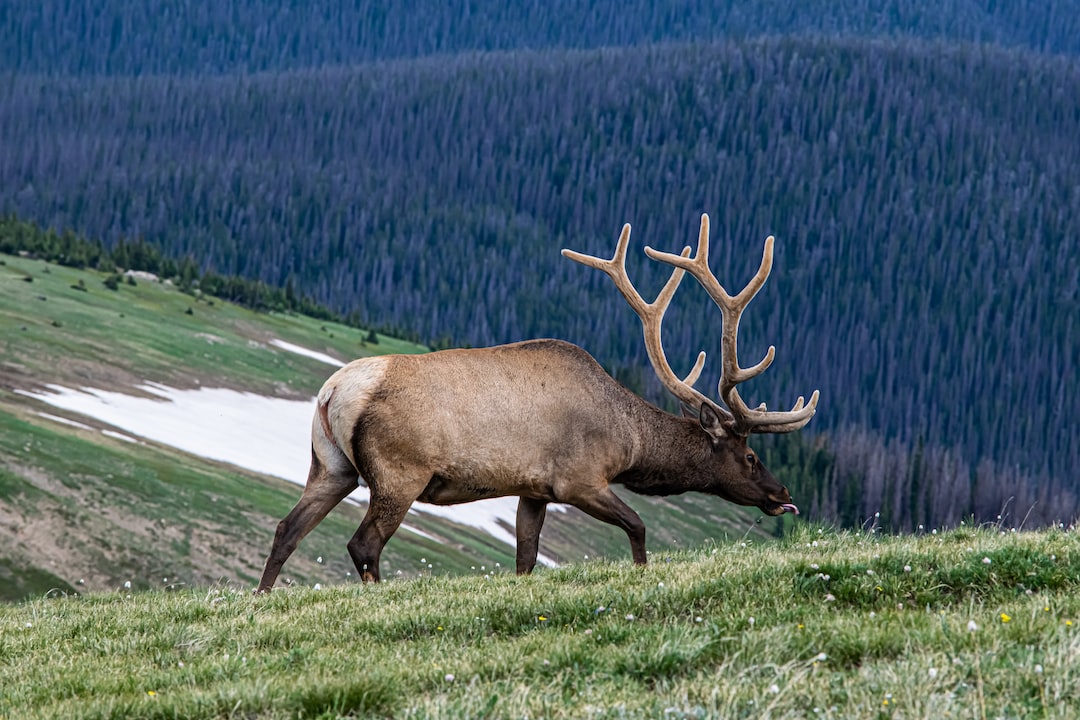What do elk eat? That’s a question that every elk hunter should be asking.
After all, understanding what an animal eats can help you find it and even anticipate its behavior.
But do elk really have the same diet year-round? What kind of plants do they consume and how much food does an average elk need per day?
Knowing these details is essential for hunting success in any season or habitat, so let’s take a closer look at exactly what do elk eat.
We’ll also discuss how to anticipate feeding habits as well as the nutritional benefits of their diets. Finally, we’ll explore some useful hunting strategies to help you locate where elk are likely to feed.
What Do Elk Eat?
Elk are large ungulates that inhabit many parts of the world, including North America. As such, their diets vary depending on where they live and what is available to them.
Generally speaking, elk feed primarily on grasses and other vegetation in the summer months when food is abundant. In winter months, they may supplement their diet with shrubs or tree bark as well as lichens and mosses.
Seasonal Variations:
The type of food elk eat changes throughout the year due to seasonal variations in availability.
During springtime when new growth appears on plants, elk will feed heavily on fresh green vegetation like clover and dandelion leaves as well as shoots from trees such as willow or birch.
In late summer and early fall before snowfall arrives, elk switch to a diet of mostly mature grasses which provide more calories for energy during cold weather months ahead.
Elk have been known to consume over one hundred different species of plants, with preferences based on nutritional value and taste.
Common plant species consumed by elk include grasses such as:
- timothy hay or bluegrass
- legumes like alfalfa
- herbs including yarrow
- shrubs such as serviceberry
- conifers for example Douglas fir needles
- fruits from wild rose bushes
- mushrooms found near streams or rivers
- aquatic plants living in ponds or lakes
- nuts from oak trees
Ideal Habitat:
Elk are most likely to be found grazing in open meadows surrounded by forests.
This provides an ideal habitat for them with plenty of cover while still allowing access to plentiful sources of food nearby without having to travel too far away from safety if predators approach suddenly.
Water Requirements:
Elk require ample amounts of water each day so they can stay hydrated while eating all that vegetation.
They usually drink twice daily at dawn and dusk but may also take sips between meals if necessary – especially during hot summer days when temperatures rise above normal levels.
On average, an adult bull (male) elk needs about 7-9 pounds (3-4 kgs) worth of dry matter per day, while a cow (female) requires slightly less at 6-8 pounds (2-3 kgs). This amount varies depending on the age/sex ratio within herds and environmental factors such as temperature extremes which can affect how much energy is needed for survival.
Poisonous Plants
There are several common poisonous plants in the western United States that can cause serious harm if ingested by an elk or other wildlife.
When living around elk, it is important to be aware of the poisonous plants that they may come into contact with.
Unfortunately, yew is a popular culprit of elk deaths in the Western US.
In the same town in Idaho, just a year apart, neglectful residents killed multiple elk with yew planted on their properties:
2022:
https://idfg.idaho.gov/press/four-elk-die-north-hailey-after-eating-toxic-yew-plants
2023:
https://outsider.com/outdoors/news-outdoors/elk-calves-found-dead-after-consuming-toxic-plants/
Hunting Strategies for Finding Elk Feeding Grounds
Finding elk feeding grounds is an important part of successful hunting.
Knowing where to look and what to look for can help you locate the best spots for harvesting your prey. Identifying food sources in the wild is key, as elk are grazers that feed on a variety of plants throughout the year.
In summer months, they tend to prefer grasses and other green vegetation while winter brings them closer to shrubs and trees in search of buds, twigs, bark, and nuts. These are great locations for a trail camera to keep an eye on the animals in the area.
Scouting techniques such as tracking trails or looking for signs like droppings or chewed-up vegetation can also be used to pinpoint areas with high concentrations of elk activity.
Utilizing natural resources such as water sources or terrain features like ridges or valleys can also help narrow down potential feeding grounds.
Once you’ve identified possible locations for finding elk feeding grounds it is important to practice sustainable hunting practices in order to preserve these habitats over time.
This includes avoiding excessive noise when scouting so as not to disturb animals from their normal routines and taking care not to damage any vegetation during your hunt by using only necessary equipment when accessing remote areas.
It is also important to be mindful of local conservation efforts that may restrict certain activities within designated wildlife preserves which could potentially impact access points for hunters seeking out prime elk habitat locations.
By following these guidelines we can ensure future generations will have the opportunity to enjoy this great sport responsibly while helping protect our environment at the same time. Consider where the elk will be feeding as you plan your next elk hunt.
FAQs in Relation to What Do Elk Eat
What is elk’s favorite food?
Elk are herbivores and their diet consists of a variety of grasses, sedges, forbs, shrubs, and trees.
They prefer to feed on fresh green vegetation in the spring and summer months but will also consume twigs, bark, lichens, mosses and mushrooms during the winter. Their favorite food is typically fresh green grasses such as clover or alfalfa.
Elk also enjoy eating acorns when they can find them. In addition to these preferred foods elk may occasionally eat berries or other fruits depending on availability in their environment.
What do elk usually eat?
They also consume a variety of fruits and nuts depending on the season. During summer months they will often browse in meadows or fields to find fresh green plants.
In winter months they may switch to eating twigs from trees or shrubs as well as dried grasses that remain after snowfall. Elk can also eat lichens growing on rocks or logs in their habitats.
What do elk like to feed on?
Elk are primarily grazers, preferring to feed on grasses, sedges, forbs, and other herbaceous plants.
They also browse shrubs and trees in the winter months when their preferred food sources are not available.
Elk have been known to eat a variety of fruits and nuts such as apples, acorns, pears, cherries and hickory nuts.
In addition to these foods they will also consume mushrooms, lichens and mosses found in forested areas.
During the summer months elk may be seen grazing on alfalfa fields or eating from haystacks left out by farmers for livestock.
Conclusion
Elk are a unique species of animal with complex dietary needs.
Knowing what do elk eat is essential for successful hunting, as it helps you to identify the ideal habitat and feeding grounds for these animals. Elk diets vary throughout the year, but they generally feed on plants like grasses, shrubs, and lichens in addition to drinking plenty of water.
With this knowledge in hand, you’ll be well-equipped for your next elk hunt.



